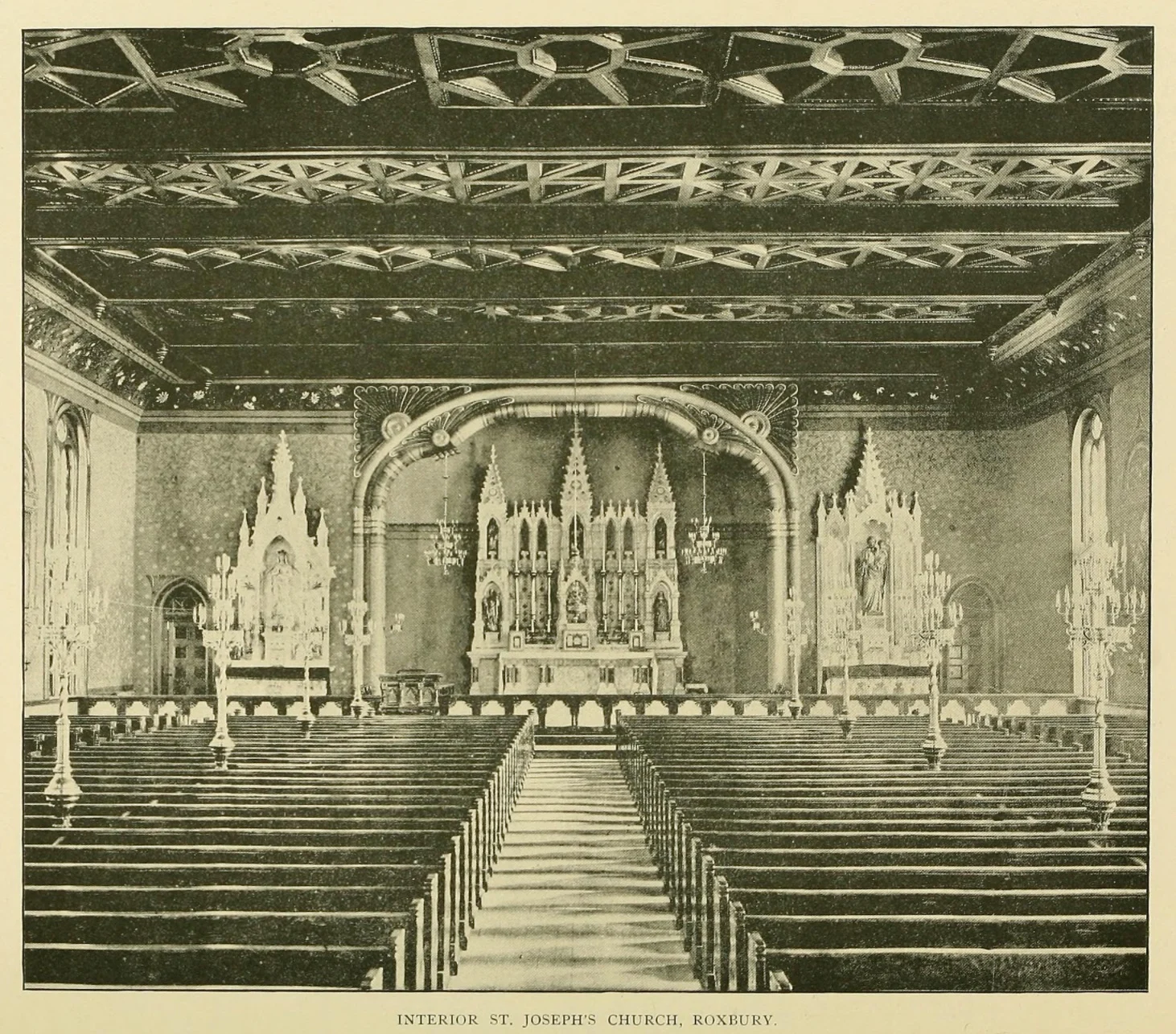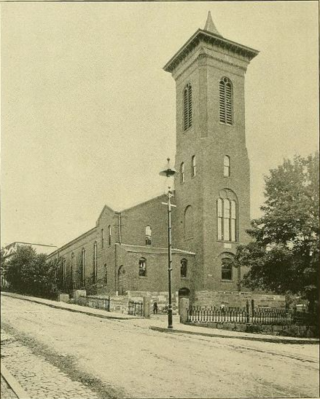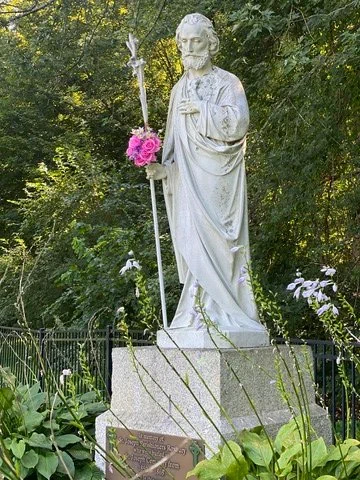
The image of St. Joseph’s Church in Roxbury is accredited to the American Ancestry Database.


From 1868 on little is known about this cemetery. It’s markings on city maps were no longer listed after 1882. For maybe well over one hundred years the history of the cemetery is shrouded in mystery. No gravestones are seen in pictures. The Grammar School was built in 1887 right beside the cemetery and there is no indication of a cemetery. For many decades the area of the cemetery was a peaceful green space with two trees.
It was rumored and believed that the bodies of the deceased had been transferred to another cemetery, though no records could be found. In the 1990s a company was digging a trench near the green space and found a gravestone. The digging was stopped. No other material was found which indicated that the cemetery no longer existed.
